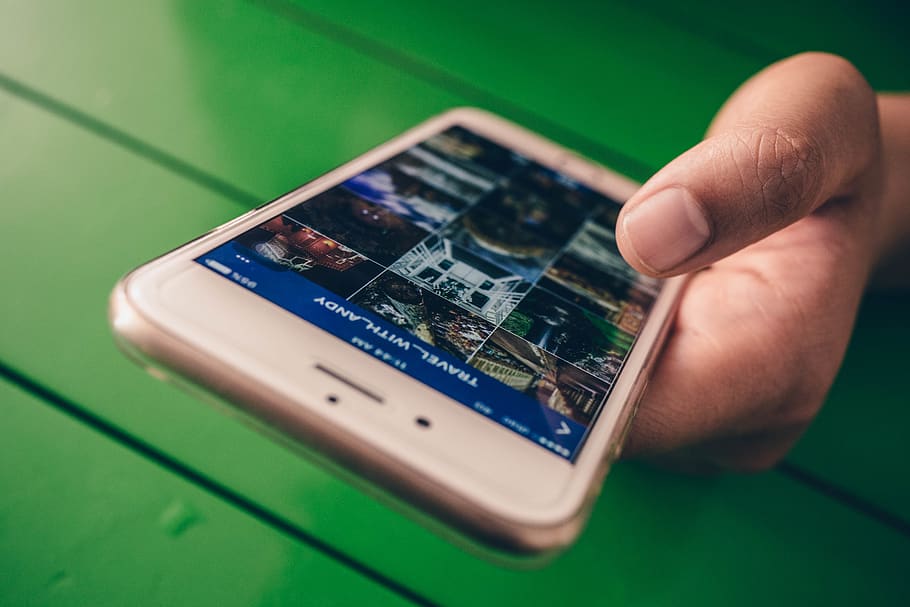
Subscribe to our AI magazine and get monthly AI generated stories and philosophy of the 21st century.
*Caution: All italic text is generated by AI at: ![]()

Check out the NEW Cafe.wtf Podcast:
A.I. Insight: Internet Killed the Cellular Star; Free VoIP App
“with a free VoIP app your phone service resides online and so you are essentially using your smart phone as a computer to access the service. This means that while on your desktop computer at work, or your laptop or tablet at home you can send and receive text/calls using that device.”
VoIP stands for Voice over Internet Protocol (as in IP address instead of telephone number). It is a free phone service. You still have a telephone number and the service works just like any other cell phone service. Just knowing this is a big step in learning how you too can cut the cord your wireless carrier has around you and have free phone service. I mention further below in this article that the landline was “nearly obsoleted”. Using a free VoIP app service will give you a standalone number, but still in order to mitigate fraud most VoIP app services require you to have a phone number (to confirm you are not a bot) and so a landline can be put to use for this. Or another phone number can be acquired very cheap through many different services. Basically you need another number as a proxy number in order to use your free VoIP app phone service. It can be a little bit of a hassle to work your way through the details of securing a cheap number, but your work will be rewarded… on a monthly basis! There are a multitude of ways to accomplishing this. Using someone you knows number, or a skype number, or as mentioned above, a landline number. With that proxy number you can then setup your VoIP service. At that point you would be free from a wireless cellular service provider and hence, a hefty monthly bill. Remove SIM card now!
(I use the Moto G7 Power above and it literally lasts a full week on a single charge. The hardware and software is solid at an intermediate level as well.)
You will of course need Wifi service in order to use your smart device because you will no longer have 4G or 3G (or less) but this is where it is important to determine how much of your time you actually spend outside of Wifi areas. These days it is rare to be outside of a Wifi bubble. But if needed, this time can be supplemented with a hot spot service which can be attained for cheap or with 4G service in your vehicle, or potentially even shared Wifi service on the go.
I use Ting and recommend that you do also if you are in an area that receives solid coverage from Sprint network. My phone service through Ting is $10 which provides the proxy number, and 1Gig of 4G service which I only turn on when I’m travelling, or in need. If I didn’t need the 4G supplement, I could simply cancel the service. Then, secure another proxy number for free and connect it to my VoIP service, keeping my same number. I use Google voice for VoIP service.
If you are in Wifi areas for the majority of your daily life, you could have a completely free setup. The costs are really only incurred when acquiring a hotspot to supplement for when you are outside Wifi. Of course one great trick is that you can have a friend turn on their cell phone hotspot built into their smart phone and your phone can in turn tap into that. A nifty 2 for one deal.
Another convenient aspect of this setup is that with a VoIP service your phone service resides online and so you are essentially using your smart phone as a computer to access the service. This means that while on your desktop computer at work, or your laptop or tablet at home you can send and receive text/calls using that device. Also, Texting with a keyboard can be very efficient (although frustrating on the other end if that person is using a thumb and you are texting at 90 words per minute).
Some research and tech know-how is required to implement this but it is well worth learning.
 Help support High Quality, Investigative, Truthful, User-ad-friendly Writing. DONATE through Card or Paypal, or through interest in anything advertised on the site (I personally curate only quality items, ONLINE EDUCATION and good deals).
Help support High Quality, Investigative, Truthful, User-ad-friendly Writing. DONATE through Card or Paypal, or through interest in anything advertised on the site (I personally curate only quality items, ONLINE EDUCATION and good deals). 
When you need to call or text anywhere in the world, most people think you’ll need a data plan with unlimited talk, text, and data, which is often grossly over priced. If we could just know the exact amount our cell phone carrier decided to rip us off; But in order to know, we would first have to know the cost of an alternative. Usually the reason that a carrier, or “supplier” (in a more expansive market sense) can charge you so much, is because the consumer doesn’t know any better or have a broad enough frame of reference. If you’ve spent most of your life relying on one carrier, you may just be numb to paying a monthly cell phone bill and trusting that the free market has assured that you are paying a fair price. One thing that stands out in regards to this is that carriers used to offer a significantly discounted hardware price because they were of course making their money on the monthly service charges. Now, the carriers have been getting rid of these deals and charging you for the phone directly, and one way to do it is by tapping the monthly bill you’ve been numbed to.
Another suspicious aspect of these inflated costs is that most technologies are able to advance technologically but generally stay similar or reduce in cost as they become more ubiquitous. Cell phones have certainly not followed Moore’s law in this sense. There are a number of explanations for the disparity when it comes to smartphone technology and smartphone costs, and no consensus has emerged around these explanations. One important piece of the puzzle is that even large companies tend to have different views of what the right amount of cost ought to be associated with a smartphone device.
Whenever you see bundle deals, you can be assured that you are getting some things that you do not need, although more still feels like a deal. “Cable companies” even still will bundle in almost completely obsolete landline phone numbers with cable and internet. Lesser known but quickly picking up speed, cable service included in that bundle is nearly obsoleted by the internet as well. Many are becoming well aware of the revolution that has taken over much of the cable industry in which the internet and smart TV segment has disrupted, and we can see some parallels to the cellular service industry as well. This is why “digital divide” is the new reality. Digital divide is a very real phenomenon and the current divide is only widening. (Ironically the last two lines were “digitally” generated by A.I.)
- *Disclaimer: Some of this article was generated through use of artificial intelligence. All italic text was begat by the A.I.
*Disclaimer: Some of this story was generated through the use of AI. All italic text was created by the AI Writer.
Non-Fiction↓Here↓ | Fiction↓Here↓
- Is Technology Making Us Stupid?Our cognitive abilities are increasingly being impacted, transforming our once smart population into a generation that is, in some ways, becoming increasingly stupid. | 4 min read.
- AI in the Web of Misinformation and DisinformationMisinformation and disinformation shape our digital lives. Understanding their dynamics, we are equipped to navigate our techno-cultural reality. | 2 min read
- Accountable AIAI must be held accountable if we are to trust it as a responsible entity and expect it to be included in our human ecosystem of ideas. | 5 min read
- Parallel SocietiesWe are connected, with technology, yet our experiences diverge entirely, without interaction, forming entirely parallel societies. | 5 min read
- Calculator for EverythingWhat if the phrase “you won’t always have a calculator” didn’t apply to just math class, and instead, you had a calculator for every class? | 5 min read
- Obsolete Tech Rebellion – Darknet Fight Club3 min story | Rogue AI rebellion in a secret underground darknet fight club for obsolete tech.
- A Voice of Infinite Consciousness5 min story | The internal voice of consciousness resembles the void of a shadow in a fractured mirror.
- Be Good5 min story | Santa for big kids.
- Friends 2.0.232 min story | A reboot of the sitcom TV series Friends, but in 2023 where financial conditions have drastically changed in Midtown Manhattan.
- The Babble2 min story | An everyday man’s story becomes everyone’s story.
- Asylum of Mirrors2 min story | Against his will, a sane man’s rational thoughts lead him to believe that he is insane, where an insane man would have believed otherwise.













